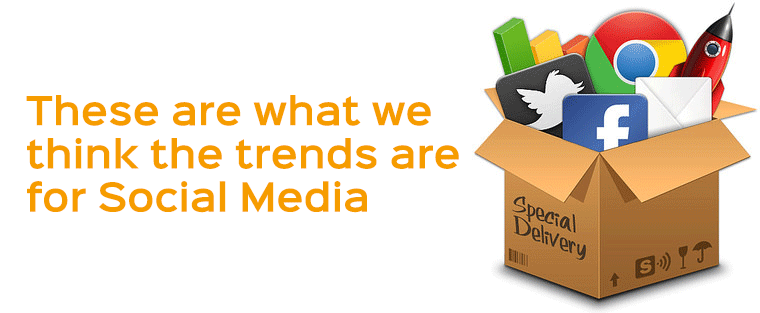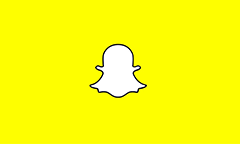
(Image by Automotive Social, licensed under CC BY 2.0.)
Social Media Marketing is colossal and any business not doing it is missing a trick. Whether you are a global brand or a small local business it’s simple to get your message across consistently via all the platforms that are out there.
We think that the skills gap is probably the single most important factor affecting pick up. We have scoured the leading influencers in the Social Media world to come up with our points to look out for in 2017.
Social Media
We think there are about 13 things to go through..
- VR/Augmented Reality
- Social Messaging
- Fake News
- Video
- Chatbots
- Paid Social
- Expiring Content
- Personalisation
- Dark Social
- Rise of Mobile
- Social eCommerce
- Staff advocacy
- Skills gap
VR/Augmented Reality
We’ve been reading predictions of virtual reality (VR) and augmented reality (AR) taking over for the last few years. It never quite happens.
But think about what happened this year. Snapchat selfie lenses brought the idea of augmented reality into the social sphere and for a bit, you couldn’t walk down the road without someone bumping into you while they played Pokémon Go which introduced a lot of people to AR. It showed that there is mass appeal for it when it is executed well. Also, several VR sets went on sale and generated hype, although they are still missing the killer app that will make everyone wonder what they did before. The practical application of these technologies is yet to be worked out beyond gaming. Brands with physical stores are likely to be interested in AR development, as it makes proximity-based offers and engagement possible.
So, we expect the other social platforms to jump on the bandwagon in 2017. Mark Zuckerberg has confirmed that Facebook is already experimenting with augmented reality. They recently acquired Masquerade, a live filter and selfie app for live streaming video. And just like live video, augmented reality creates new opportunities for brands to connect with their audience by sharing experiences, rather than just information, on social media. Apparently, almost 75% of millennials are interested in virtual reality...
People don’t look cool wearing VR headsets. The price will also be an obstacle for companies looking at VR. These will be some of the factors that will determine whether VR truly becomes a big social media trend of 2017, or goes the way of Google Glass and 3D TVs.
Social Messaging
The messaging apps have a much wider community of users than social networks. WhatsApp, Facebook Messenger, Viber and WeChat together have more users than the big networks: Facebook, Twitter, LinkedIn, and Instagram.
Over-the-top (OTT messaging is defined as instant messaging services provided by third parties, as an alternative to text messaging services provided by a mobile network operator. An example is the Facebook-owned mobile application WhatsApp, that serves to replace text messaging on Internet connected smartphones.) messaging and SMS messaging are millennials’ preferred form of communication. Sixty-two percent of millennials are more loyal to brands that engage them via those channels and an estimated two billion users will be messaging through OTT apps by 2018. This is because millennials want the personal touch, transparency and collaboration that the one-on-one communication allows.

Fake News
Fake news
More people are turning to the internet as their main news source instead of TV, newspaper, or radio. There has been a rise in “fake news” from sites that deliberately publish and circulate inaccurate information about current events. Now, Facebook is already taking steps to curb fake news appearing on the site. These “news outlets” are no longer allowed to advertise on the platform. Germany is already considering legislation to fine social media sites that let fake news proliferate. Look at Google’s struggle to tackle fake news to see the difficulties social media platforms will have. While Google changed its algorithm, it has made the search engine more vulnerable to fake news because pages are rewarded by how often they are clicked on. Fake news can gain a high volume of traffic, and therefore increase its ranking on the search engine’s results page. In a year where ‘post-truth’ was the Oxford Dictionary word of the year, it’s clear fake news isn’t going anywhere anytime soon.
Video
Live video took off in 2016, and it has huge potential. Social media platforms taking advantage of this - Facebook Live, YouTube Live and Periscope Pro, to name a few, with Instagram recently releasing live video to US residents. Facebook has recently announced that it will roll out its 360-degree video for Facebook Live users for all Pages and profiles in 2017. YouTube has already announced the same feature. Live video is good for businesses.. It is now possible for four hours of video to be streamed, and it can even be streamed to groups and event listings. It’s a great way to raise awareness of your brand and build a community.

Chatbots
Chatbots
Chatbots are a kind of artificial intelligence that can have a conversation with someone. Facebook had integrated them within Facebook Messenger, and businesses are now using them to communicate with customers. Artificial intelligence is now reaching a level where it is useful to many people’s daily lives. The rise of digital assistants, such as Siri, Cortana, Alexa and Google Assistant have got people used to talking to their phone rather than exercising their fingers.
Chatbots are already helping businesses improve customer service by quickly responding to their comments and questions. You can only expect the tool to become more popular in 2017 -- especially since social media sites are doing everything they can to keep people on their platform instead of navigating away to a business website. With Facebook, WhatsApp, Twitter, and Google Allo all introducing integrated bots to help with bookings and customer service, prepare to start talking to machines much more often. Chatbots make sense for brands, allowing common questions to be answered and simple bookings to be managed. This can free up customer service representatives to answer more in-depth queries.
Paid Social
How do you best reach your audience? It’s a vital question for marketers, and one where the answer is always changing. You may choose to aim for the 3.5 billion searches per day conducted on Google. Alternatively, you can aim for social media. Facebook holds 1.71 billion people. Instagram has 500 million active users. WhatsApp has 1 billion. YouTube has 1 billion.. With social, the halcyon days which saw brands’ content being distributed at no cost are over. The changes brought about by the social networks mean that organic reach is greatly reduced, in Facebook’s case from 15% to as low as 2%. Brands have two choices: pay up, or have a true understanding of the content your audience wants to see and provide it to them. Even then, you would need to think about how you can maximize sharing, and engage influencers to increase the reach. In the end, a successful strategy will most likely have to include paying money to the networks.

Snapchat
Expiring Content
The success of Snapchat has seen many of its competitor’s introducing features inspired by the messaging app. Facebook, Instagram, and WhatsApp have all ‘borrowed’ Snapchat features recently.
Personalisation
The huge amount of data available increasingly allows ads to be shown to the right people at the right time, both across the web and specifically on social networks. The massive increase in the amount of content published online means that this needs to be seen by the right person at the right time too. There is so much choice for the reader that if you don’t personalize and focus on a specific target, your content is much less likely to resonate with consumers. Niche content, interactive content, innovative campaigns: it’s all part of the content arms race, trying to win limited attention in a very busy space.

Dark Social
Dark Social
Dark social has been an issue for companies for some time. The popularity of direct messaging apps and the growing number of untraceable, encrypted messages mean attribution is becoming increasingly difficult. This creates problems when trying to measure, analyse and optimise marketing campaigns. There doesn’t appear to be a solution to this growing problem yet. You can reduce the amount of traffic that comes from dark social by adding share buttons to your site. You can measure, with a degree of accuracy, the amount of ‘direct’ traffic that comes from dark social. What you can’t do is tell where that traffic is coming from, and that seems unlikely to change.
Rise of mobile
‘Optimise for mobile’ has been a trend for years. But its importance has increased every year. Mobile traffic has overtaken desktop on the web this year. Google is working on a new, mobile-first web index. These changes mean that it is more important than ever to make the mobile experience as good as possible. Increasingly that means putting mobile first, rather than simply optimizing for mobile.
Social Ecommerce
Because of the rise of social media platforms and social messaging, companies are going to look to how it can be financially beneficial for them. 93 percent of millennials are spending their time on social networks (Statista), so it makes sense that businesses would want to capitalise on this trend. There has already been the rise of WeChat social commerce. In April 2016 it was reported 31% of users initiated purchases on WeChat, which is twice as many as the previous year. While social media platforms have already gained the trust of users, it remains to be seen whether people will be willing to go one step further and make purchases. Twitter has already tested a ‘buy’ button. There are now over one million businesses on Pinterest, with almost 75% of users having bought something they saw on the platform. With the increasing popularity of mobile browsing, it can be expected that social commerce will continue to increase throughout 2017.
Staff advocacy
Employee advocacy refers to the exposure that employees generate for companies through their online presence. Although employees can use email, chat and discussion forums, social media is often a popular platform for employee social advocacy. Employee social advocacy means companies can expand their reach, gain new target audiences and build a larger community. Customers are more likely to form relationships with other people, rather than a brand, and are therefore more likely to share content written by an individual person. If the employee social advocacy is done correctly, brands can expect to see a higher overall ROI. Altimeter found that since 2013, interest in employee advocacy has grown 191%. Furthermore, 45% of respondents name it as their top external objective.

Mind the gap
Staff skills gap
More companies than ever are using social channels for marketing, customer service and sales: around 90 percent (eMarketer). But training and resources for frontline employees have been largely ignored. Capgemini Consulting says nine out of 10 companies report their workers don’t have the requisite skills to leverage social media as a business tool. This manifests itself in missed opportunities for sales leads on Twitter to embarrassing corporate gaffes on Facebook - it’ll only get worse in 2017, as employees will be expected to use ever more channels in more diverse and sophisticated ways. Some hope is on the horizon. Social media coursework is slowly being incorporated into university programs, and not just for students pursuing marketing and communications degrees. For businesses seeking a quicker fix, online, on-demand resources can help fill the gap.
Alchemy Interactive can ‘do’ your social media for you. Our team is extremely experienced in setting up the social channels and then posting rich and relevant content that ensures people will take notice. Harness this to our proven SEO and PPC offering and your business will start to fly. And then of course for the full service… we’re really good at websites.
Social media marketing refers to the process of gaining website traffic or attention through social media sites. Alchemy Interactive can ‘do’ your social media for you. Our team is extremely experienced in setting up the social channels and then posting rich and relevant content that ensures people will take notice. Harness this to our proven SEO and PPC offering and your business will start to fly. And then of course for the full service… we’re really good at websites.

